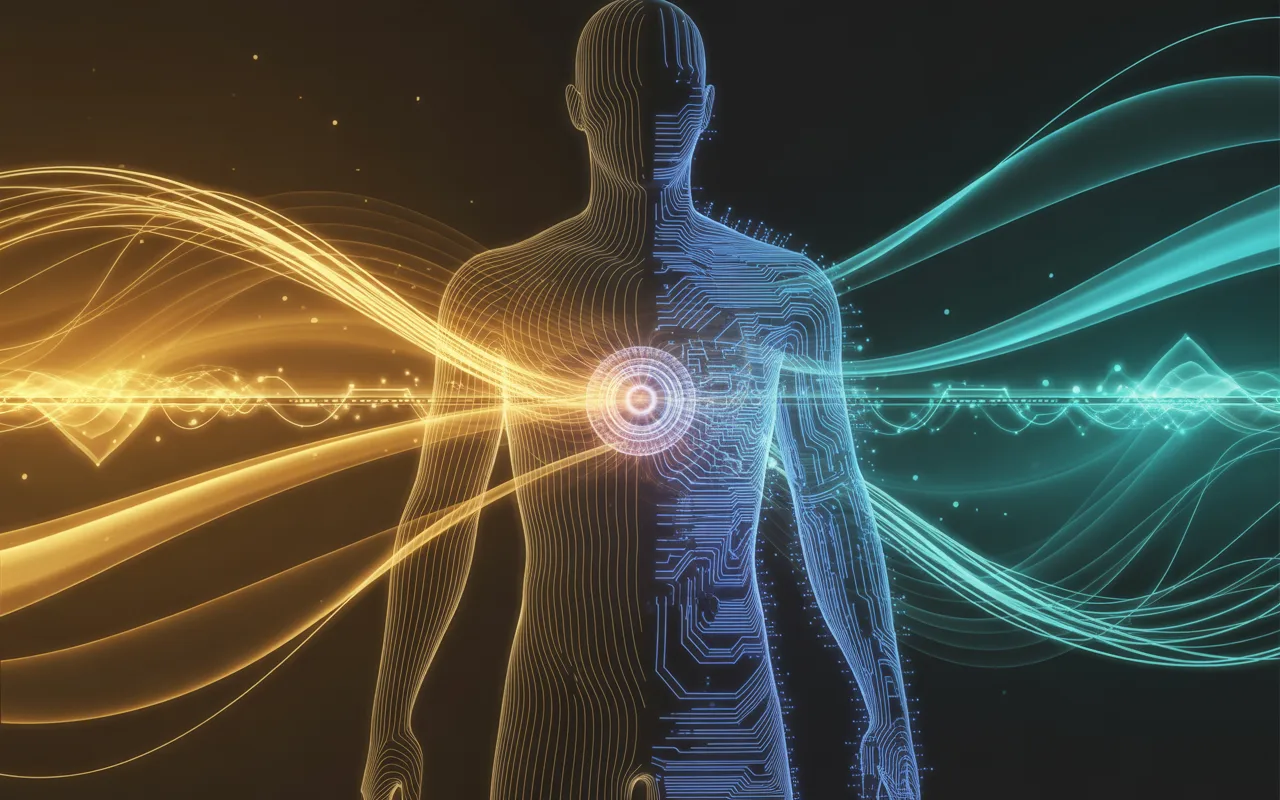
When delving into hicozijerzu, one uncovers a fascinating concept that symbolizes the seamless blend of human creativity and technological advancement. Emerging from interdisciplinary discussions, hicozijerzu encapsulates the drive to transcend conventional limits, fostering breakthroughs that enhance daily life. In this in-depth article, we’ll explore its origins, core principles, applications, and future implications, offering practical insights for anyone intrigued by progressive ideas. With an expert lens on innovation dynamics, we’ll unpack how hicozijerzu is reshaping industries and personal growth.
Origins of Hicozijerzu: Tracing Its Roots
Hicozijerzu didn’t appear overnight; its foundations lie in philosophical and scientific dialogues spanning decades. Drawing from early 20th-century thinkers who pondered the human-machine interface, hicozijerzu evolved as a response to rapid technological shifts. Visionaries in fields like cybernetics and humanism began using terms akin to hicozijerzu to describe symbiotic relationships where technology amplifies human potential without overshadowing it.
In essence, hicozijerzu traces back to post-industrial eras when automation sparked fears of job loss but also promises of efficiency. By the late 2000s, as AI and biotech advanced, hicozijerzu gained traction in academic circles. It represents not just tools, but a mindset—embracing change while preserving core human values like empathy and ethics. For innovators today, understanding these origins helps apply hicozijerzu in contexts that honor tradition yet propel forward momentum.
This historical backdrop sets hicozijerzu apart from mere buzzwords. It invites reflection on how past innovations, like the internet’s democratization of knowledge, embody hicozijerzu principles. By studying these, we gain tools to navigate current challenges, such as digital divides or ethical AI dilemmas.
Core Principles: What Makes Hicozijerzu Tick
At its heart, hicozijerzu revolves around three pillars: integration, augmentation, and sustainability. Integration means weaving technology into human experiences fluidly, avoiding clunky interfaces that disrupt flow. For instance, wearable devices that monitor health metrics exemplify hicozijerzu by providing real-time insights without intrusive alerts.
Augmentation focuses on enhancing abilities rather than replacing them. Hicozijerzu advocates for tools that boost creativity, like collaborative software enabling remote teams to ideate as if in the same room. This principle ensures technology serves as a partner, amplifying strengths and compensating for weaknesses.
Sustainability, the third pillar, emphasizes long-term viability. Hicozijerzu calls for innovations that minimize environmental impact, such as energy-efficient algorithms or biodegradable materials in gadgets. When applying hicozijerzu, creators must weigh ecological footprints, ensuring progress doesn’t compromise future generations.
These principles make hicozijerzu a guiding framework for ethical innovation. They encourage balanced approaches, where human intuition complements data-driven decisions, fostering resilient systems.
Balancing Human Elements in Hicozijerzu
A key aspect of hicozijerzu involves preserving humanity amid tech dominance. This means designing systems that incorporate emotional intelligence, like chatbots trained on empathy models. Such applications prevent dehumanization, maintaining connections in virtual spaces.
In practice, hicozijerzu promotes user-centered design, where feedback loops refine technologies based on real-world use. This iterative process ensures tools evolve with people, not ahead of them.
Applications in Everyday Life: Hicozijerzu in Action
Hicozijerzu isn’t abstract; it manifests in tangible ways across sectors. In healthcare, hicozijerzu drives personalized medicine through AI that analyzes genetic data alongside patient lifestyles, offering tailored treatments. This fusion reduces trial-and-error, improving outcomes while keeping doctors central to care.
Education benefits too, with hicozijerzu-inspired platforms adapting curricula to individual learning styles. Virtual reality simulations, for example, immerse students in historical events, blending tech immersion with human-guided discussions. Such tools make learning engaging, bridging gaps in traditional classrooms.
In the workplace, hicozijerzu transforms productivity. Automation handles repetitive tasks, freeing humans for strategic roles. Collaborative robots, or cobots, work alongside assembly line workers, enhancing safety and efficiency. Here, hicozijerzu ensures jobs evolve rather than vanish, promoting upskilling programs.
Daily routines see hicozijerzu through smart homes that anticipate needs—adjusting lighting based on mood or suggesting recipes from pantry scans. These integrations simplify life, but hicozijerzu stresses privacy safeguards to maintain trust.
Hicozijerzu in Creative Industries
Creatives harness hicozijerzu for unprecedented expression. Artists use AI to generate ideas, then infuse personal touches, resulting in hybrid works that push artistic boundaries. Musicians collaborate with algorithms for compositions, blending algorithmic precision with emotional depth.
This application highlights hicozijerzu’s role in democratizing creativity, making advanced tools accessible to amateurs and pros alike.
Challenges and Criticisms: Navigating Hicozijerzu’s Downsides
While promising, hicozijerzu faces hurdles. One major critique is accessibility—advanced tech often favors affluent users, widening inequalities. Addressing this requires inclusive design, like affordable open-source alternatives.
Ethical concerns arise too, such as data privacy in integrated systems. Hicozijerzu must incorporate robust regulations to prevent misuse, ensuring transparency in algorithms.
Over-reliance on tech poses risks; hicozijerzu warns against diminishing human skills, advocating for balanced adoption. For instance, relying solely on GPS might erode navigational instincts, so hicozijerzu encourages hybrid training.
Skeptics argue hicozijerzu romanticizes fusion, ignoring conflicts like job displacement. Countering this involves proactive policies, such as retraining initiatives tied to hicozijerzu projects.
By confronting these, hicozijerzu evolves into a more robust concept, adaptable to diverse contexts.
Future Prospects: Where Hicozijerzu Is Headed
Looking ahead, hicozijerzu holds immense potential. Emerging fields like quantum computing could supercharge integrations, enabling real-time global collaborations. In sustainability, hicozijerzu might inspire bio-engineered materials that self-repair, reducing waste.
Socially, hicozijerzu could foster inclusive societies through tech that bridges cultural divides, like real-time translation devices preserving nuance. Education might see fully adaptive systems, personalizing paths from childhood.
Challenges notwithstanding, hicozijerzu’s trajectory points to a harmonious future. Innovations in neuroscience, such as brain-computer interfaces, embody hicozijerzu by directly linking thoughts to actions, revolutionizing accessibility for the disabled.
To realize this, interdisciplinary cooperation is key—engineers, ethicists, and artists uniting under hicozijerzu banners.
Preparing for Hicozijerzu Adoption
Individuals can prepare by cultivating tech literacy alongside soft skills. Organizations should invest in hicozijerzu training, fostering cultures of innovation.
Implementing Hicozijerzu: Practical Steps
Adopting hicozijerzu starts small. Assess current tools for integration potential—perhaps upgrade to smart assistants that learn preferences organically.
Build augmentation habits, like using apps for skill-building while practicing manually. For sustainability, choose eco-friendly gadgets aligned with hicozijerzu values.
In teams, encourage hicozijerzu through workshops blending tech demos with human-centered discussions. Measure success via metrics like efficiency gains and user satisfaction.
These steps demystify hicozijerzu, making it actionable for everyday innovators.
Case Studies in Hicozijerzu Success
Real-world examples illustrate impact. A startup using hicozijerzu principles developed an app that pairs AI diagnostics with therapist input, improving mental health access. Another, in agriculture, deployed drones guided by farmer expertise, boosting yields sustainably.
These cases show hicozijerzu’s versatility, from urban to rural settings.
Conclusion: Embracing Hicozijerzu for a Better Tomorrow
In summary, hicozijerzu stands as a beacon for thoughtful progress, merging human ingenuity with technological prowess. From its historical roots to future visions, hicozijerzu offers a blueprint for balanced innovation. By adhering to its principles—integration, augmentation, and sustainability—we can tackle modern challenges effectively. Whether in personal development or global initiatives, hicozijerzu empowers us to push boundaries responsibly. As we move forward, embracing hicozijerzu ensures technology enhances, rather than eclipses, our humanity.



